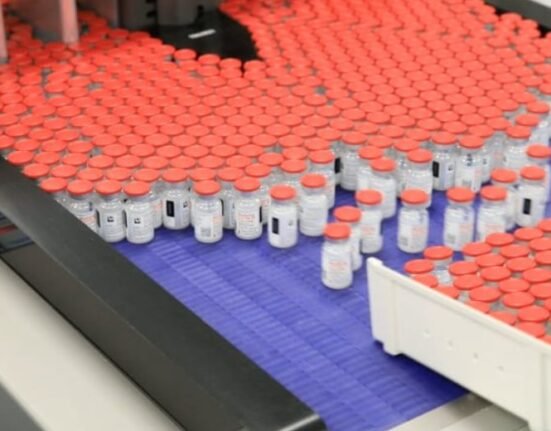HQ Team
February 28, 2023: Antidepressant drug consumption is on the rise in Europe, and Iceland tops the list, followed by Portugal and the UK, according to the OECD.
The drug consumption per 1,000 people a day, valid from 20 defined daily doses (DDD) in 2020 in Latvia to 153 DDD in Iceland, according to data provided by the Organisation for Economic Cooperation and Development.
Portugal was Iceland with 131 doses, the UK with 108 amounts, Sweden with 105 daily doses and Spain with 87.
“Global consumption of antidepressant drugs (AD) has increased dramatically in the last two decades, with Europeans (being) the largest consumers,” according to the report.
The use of antidepressants increased nearly two-and-a-half times from 2000 to 2020 in 18 European countries.
OECD data showed a dramatic increase in anxiety and depression during the COVID‑19 pandemic.
Internal and external triggers
OECD datasets demonstrated the defined daily dose consumption of “N06A-antidepressants”. This group “comprises preparations used in the treatment of endogenous — depression from internal causes — and exogenous depressions, from external causes such as a traumatic event, according to the WHO.
The NO6A group is subdivided mainly according to the mode of action. The various antidepressants have different ways of action, and the classification, such as NO6A, will not reflect the exact mode of action of the various antidepressants.
The average antidepressant consumption across 18 European countries was a 30.5 DDD per 1,000 people per day in 2000, rising to 75.3 DDD in 2020, a 147% increase, according to the OECD.
“But this overall average conceals very different starting points for antidepressant use in 2000 in certain countries, ranging from 6.4 DDD in Estonia to 70.5 DDD in Iceland. “
The Czech Republic recorded the highest increase with 577 %, while it only rose by 38% in France, making it the lowest change in these countries between 2000 and 2020,” though from a relatively high level.
It rose by 304% in Portugal, 256% in the United Kingdom, 208% in Spain and 200% in Germany in the same period.
Danish decline
A closer look at five selected countries – France, Germany, Portugal, Spain, and Sweden — over 20 years demonstrates how the use of antidepressant pharmaceuticals varies. While the increase is meager in France, especially in the last 15 years, it rocketed in Portugal in the previous two decades.
In 14 out of 18 countries, antidepressant drug use more than doubled. The OECD had data for 24 European countries.
In 2020, the average use across these 24 countries was 68 DDD. The largest three countries by population, namely Turkey (49 DDD), France (55 DDD) and Germany (62 DDD), all recorded below-average use.
The consumption of AD drugs increased by 36.5% between 2010 and 2020 in 24 European countries, with average daily use up from 49.8 DDD to 68 DDD.
Denmark is the only country to see a decrease in the use of antidepressants in the last decade, with a 4% decline.
The data on European countries does not suggest that the happier people are, the less they consume antidepressants.
Happiness correlation
Iceland, the world’s second happiest country in 2020, according to the World Happiness Report, has the highest antidepressant consumption in Europe.
Sweden ranked sixth in the Happiness Report, and has the fourth-highest use of antidepressants with 105 DDD.
Finnish people, who were the happiest nation ,according to the report, used 82 DDD antidepressants which placed Finland seventh out of 24 countries.
Latvia, which has the lowest consumption with 20 daily doses, ranked 34th in the World Happiness Report. Hungary, which follows Latvia with 30 DDD was in 43rd place on the happiness list.
Estonia recorded the highest increase in DDD with 133%, while consumption increased by 2% in France.
It doubled in the UK and increased by 50% in Turkey. The change was under 25% in 10 countries.
The antidepressant drug spending burdens citizens and their countries.
In 2020, Germany spent $812 million (€783 million) on antidepressants. Spain ($649 million or €626 million) and Italy ($456 million or €440 million) are the other leading countries for spending on antidepressants.
Economic cost
The spending ratio on antidepressants to total pharmaceutical sales suggests high costs in some countries.
In 2020, antidepressant drugs accounted for 4% of pharmaceutical sales in Portugal, compared to 2.7% in Spain, 2.2% in Austria, 1.9% in Turkey and 1.4% in Germany.
There is no comparable official data on the share of people who reported having chronic depression or consulting a psychologist, psychotherapist or psychiatrist.
Recent surveys released by the OECD found that mental health has deteriorated significantly since the start of the COVID‑19 pandemic.
From March 2020 onwards, anxiety and depression increased in 15 selected OECD countries, including several European ones.
The prevalence of anxiety in early 2020 was double or more than that observed in previous years in Belgium, France, Italy, Mexico, New Zealand, the UK and the US.
Study limitations
However, since the survey methods differ between studies, it is impossible to offer robust cross-country comparisons.
There is an increase of 10 per cent or more in consumption between 2019 and 2021 in the 14 OECD countries for which data are available. For example, use increased by 22% in Latvia in these two years, but only 1% in Hungary. More research is needed to understand any possible impact of the pandemic on these recent increases.
Researchers who studied the influences on antidepressant prescribing trends in the UK between 1995 and 2011 suggested that the increase can be attributed to the improved recognition of depression, availability of new AD drugs, changes in patient attitudes, availability of therapies, evolving clinical guidelines, and a broadening of the range of indications treated with ADs.








